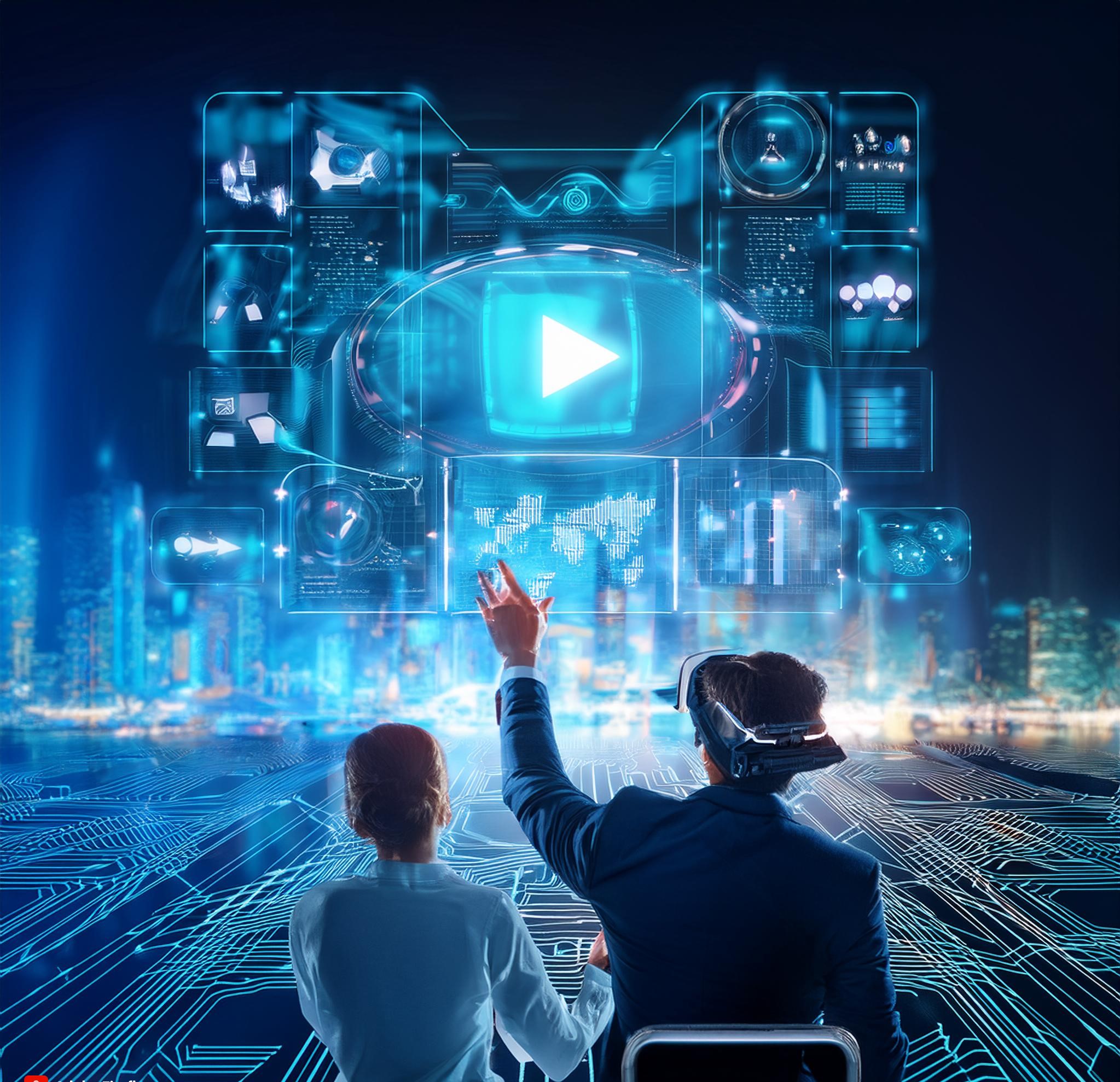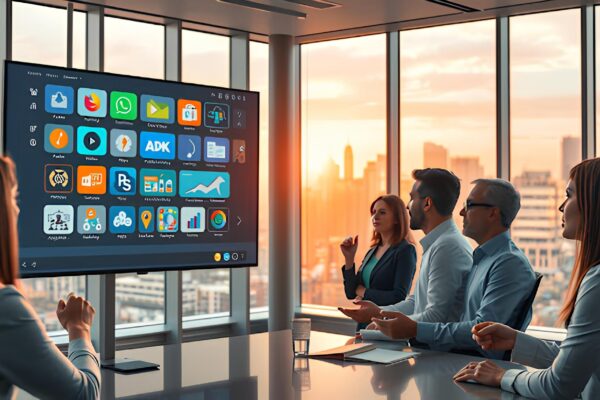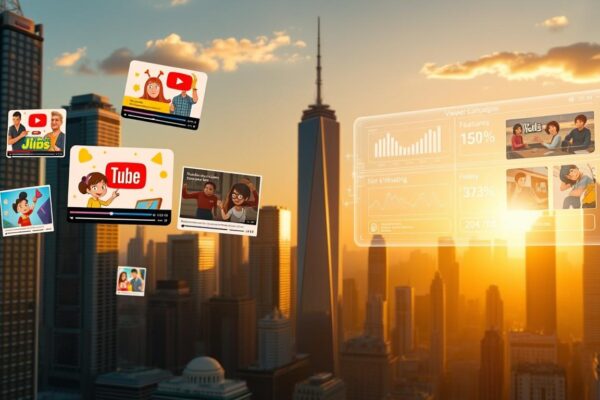
Introduction
Let’s talk about AI. It’s not just for robots anymore! AI is going to revolutionise how we create and personalise videos. Think tailor-made content that knows what you like before you do. Short-form videos aren’t going anywhere either. With our attention spans shrinking faster than my patience in traffic, bite-sized content is going to be the new norm. As we look to the future, three key innovations are set to revolutionise the industry: Artificial Intelligence (AI), Virtual Reality (VR), and Augmented Reality (AR). Staying ahead of these trends is crucial for video marketing campaign aiming to create impactful and engaging content.
Artificial Intelligence in Video Marketing
AI-Powered Video Creation
Think of having a personal video wizard at your fingertips. You don’t need to be a tech genius to use these AI video creators. They’re usually super user-friendly, with drag-and-drop interfaces and templates that make the whole process a breeze. It’s perfect for social media mavens, small business owners, or anyone who wants to create eye-catching content, explainer video without breaking a sweat.
Automated Video Editing
Gone are the days of spending hours in the editing room. Now AI can now analyze footage and automatically create polished videos. This not only saves time but also ensures consistency and high quality.
Personalized Video Content
AI is getting so smart that it’ll soon be able to whip up personalised video content on the fly. Imagine watching a cooking show where the recipes change based on your dietary preferences, or a travel vlog that focuses on the destinations you’re actually interested in. But don’t worry, this isn’t about replacing human creativity. It’s more like giving it a turbo boost.
Virtual Reality (VR) in Video Marketing
Immersive Brand Experiences
Virtual Reality (VR) is shaking things up in the world of video marketing. Imagine being able to transport your audience right into the heart of your brand’s story – that’s exactly what VR can do. It’s like giving your viewers a backstage pass to an immersive experience they won’t forget.
Virtual Showrooms
Imagine stepping into a store without leaving your couch. Sounds pretty cool, right? Well, that’s exactly what brands are cooking up with virtual showrooms. This is particularly useful for industries like real estate and retail. For brands, it’s a chance to show off their products in all their glory without the limitations of physical space. And for us shoppers? Well, it’s like having a personal shopping adventure without the hassle of parking or dealing with bad weather.
Interactive Product Demos
VR enables interactive product demos, allowing customers to experience products in a way that’s not possible with traditional video. They let you get up close and personal with products, giving you a 360-degree view and even letting you interact with them. Imagine spinning that shiny new blender around in your virtual kitchen or checking out how that sleek smartwatch looks on your wrist.
Augmented Reality (AR) in Video Marketing
Interactive Advertising
Imagine walking down the street and suddenly seeing a giant dragon perched on top of a building, or trying on clothes without ever stepping into a dressing room. Welcome to the wild world of AR interactive advertising! This tech is totally changing the game when it comes to how brands connect with us.
Try Before You Buy Experiences
So, what’s the big deal with AR in video marketing? Well, imagine being able to try on clothes without actually putting them on, or seeing how that new couch would look in your living room before you buy it. That’s the magic of AR – it blends the real world with digital elements, creating an interactive and immersive experience for viewers.
AR-Enhanced Social Media Filters
AR filters are a popular way to engage with audiences on social media. Brands can create custom filters that users can apply to their photos and videos, increasing brand visibility.
Integrating AI, VR, and AR for a Comprehensive Strategy
Synergy Between Technologies
The true power of AI, VR, and AR lies in their integration. When these tech powerhouses join forces, it’s like the Avengers of the digital world. AI brings the brains, VR offers the immersive experience, and AR adds a dash of real-world magic. Together, they’re creating marketing experiences that are not just engaging, but downright mind-blowing.
Challenges and Considerations
Technical Challenges
AI can sometimes miss the mark on understanding context or human emotions. Imagine an AI-generated ad that completely misses the cultural nuances of its target audience.
VR, It’s awesome for immersive experiences, but does it need some beefy hardware! Not everyone’s rocking a VR-ready setup, which limits its reach. Plus, motion sickness is still a thing for some users. Nobody wants their marketing to make people queasy, right?
Privacy and Ethical Concerns
AI is reminiscent of a genie’s lamp , your wish is realized with few hit or miss. Its a great for personalised recommendations. But every coin has two sides to it, we’ve all heard those stories about biased algorithms. So it’s important for Brands to make sure their AI isn’t accidentally discriminating against anyone.
Conclusion
As we look to the future of video marketing, it’s clear that AI, VR, and AR will play a central role. These technologies offer new ways to create explainer video, corporate video more engaging, personalised, and immersive experiences for viewers. By staying ahead of these trends and integrating them into their strategies, brands can set themselves apart in a competitive landscape.
FAQs
What is the role of AI in video marketing?
AI plays a significant role in video marketing by automating content creation, providing deep analytics, and optimizing advertising campaigns.
How can VR enhance brand experiences?
VR enhances brand experiences by creating immersive environments and interactive product demos, leading to higher engagement and retention.
What are the benefits of AR in product visualization?
AR allows customers to visualize products in their own environment and provides interactive user manuals, improving the customer experience.
What are the main challenges of using AI, VR, and AR in video marketing?
The main challenges include technical difficulties, high implementation costs, and privacy and ethical concerns.
How can businesses start integrating these technologies into their video marketing strategy?
Businesses can start by investing in the right tools and expertise, experimenting with small projects, and learning from successful case studies.




